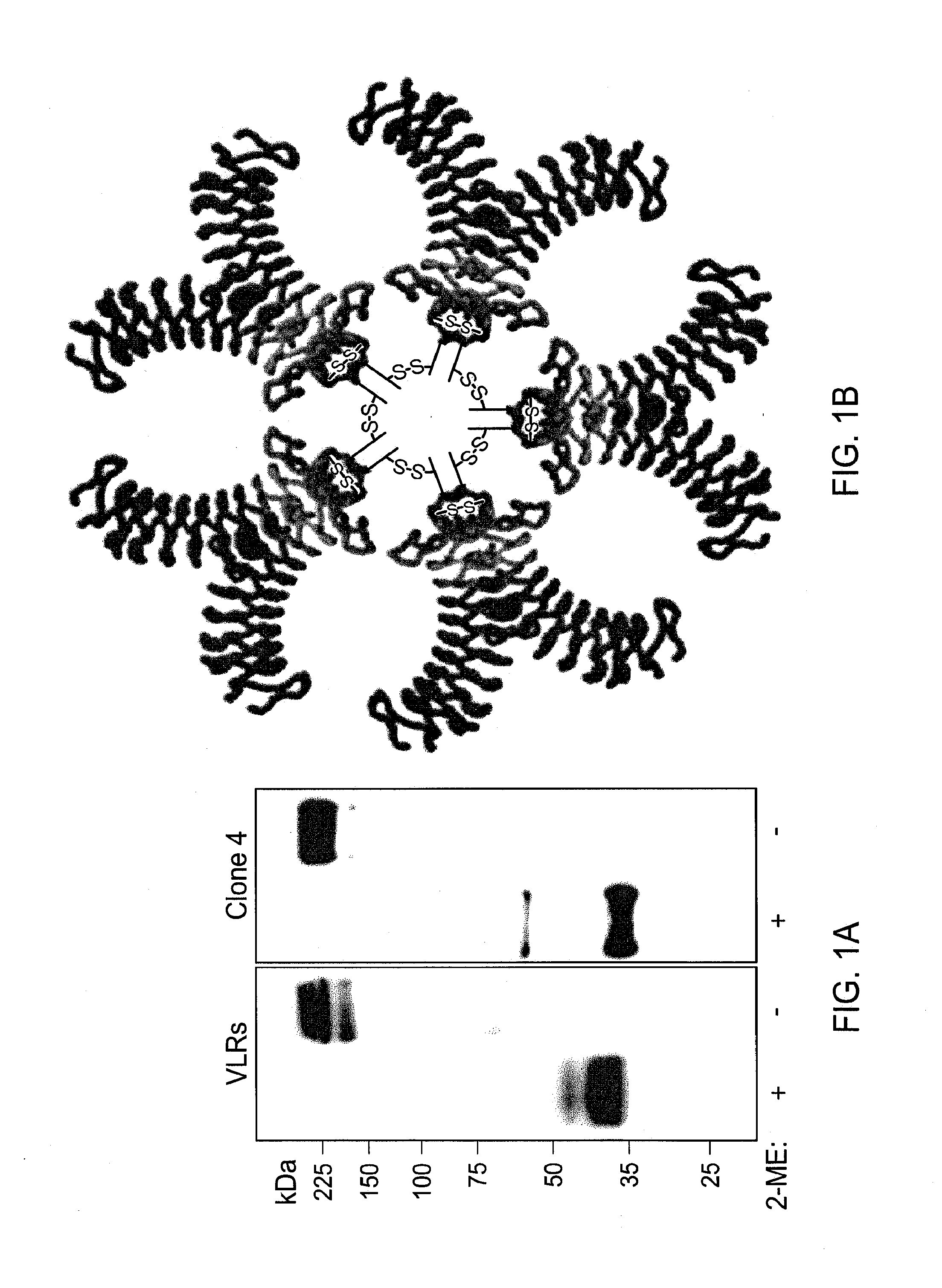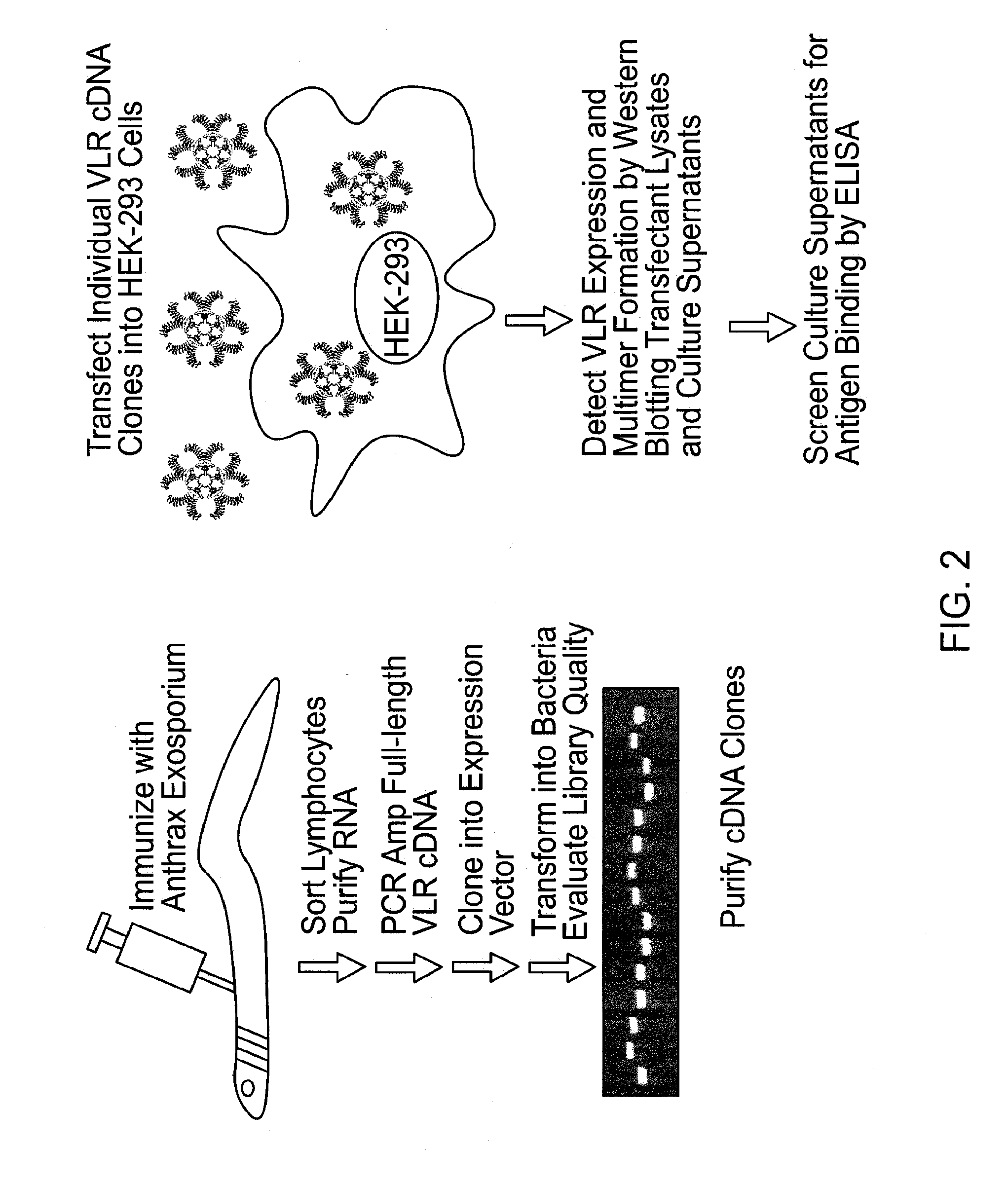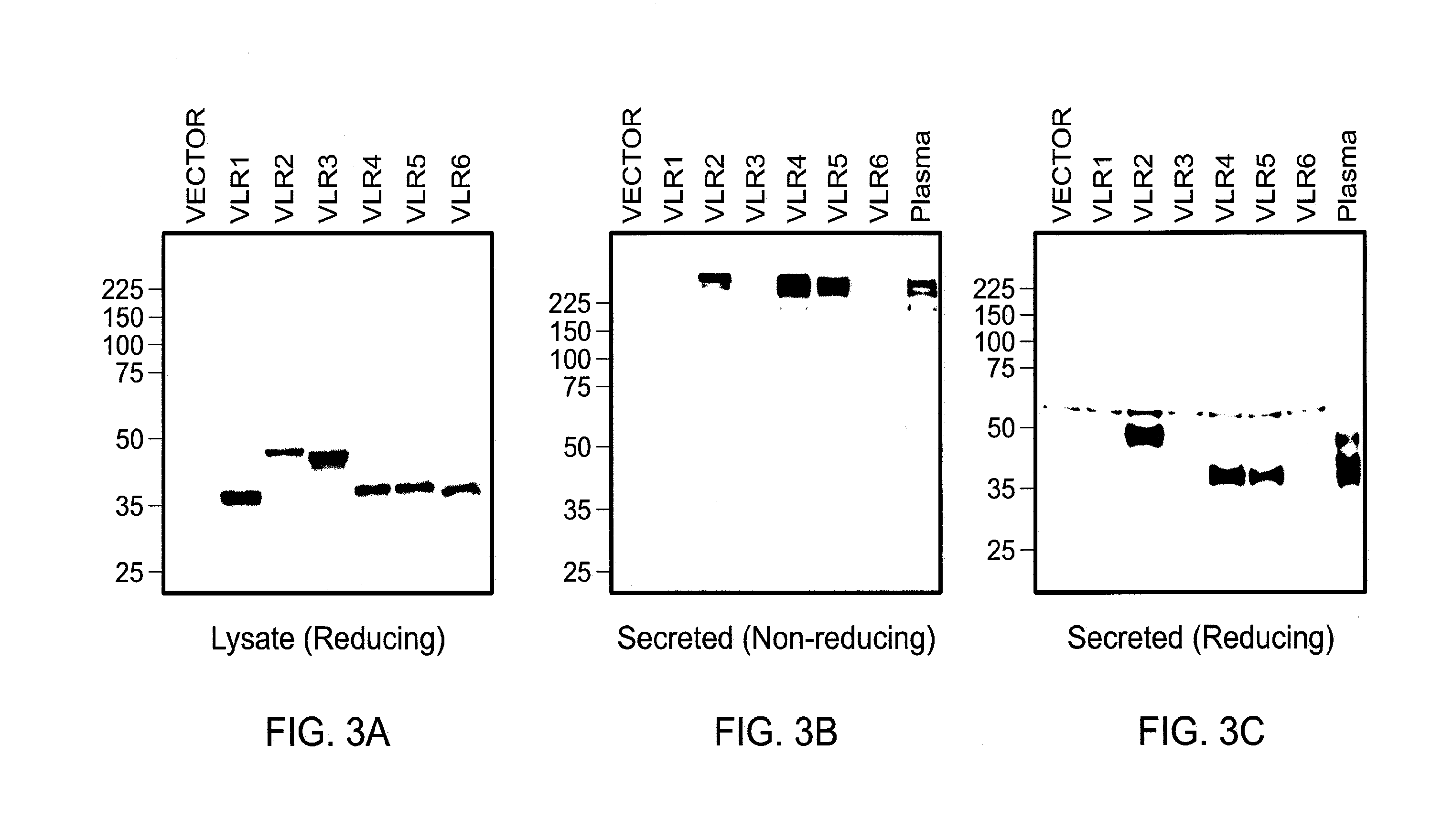Methods and compositions related to soluble monoclonal variable lymphocyte receptors of defined antigen specificity
a monoclonal variable and lymphocyte receptor technology, applied in the field of antigen specific polypeptides, can solve the problem of no cell line available for large-scale vlr production
- Summary
- Abstract
- Description
- Claims
- Application Information
AI Technical Summary
Benefits of technology
Problems solved by technology
Method used
Image
Examples
example 1
VLRs that Specifically Bind Bacillus anthracis
[0103]VLR-positive lymphocytes from Bacillus anthracis exosporium immunized lamprey were harvested and their RNA isolated. Primers were used to amplify VLR cDNAs which were cloned into an expression vector and transformed into bacteria. Selected colonies were screened by PCR with VLR specific primers. The heterogeneous size of the PCR products indicated the diversity of the VLR cDNA library. Plasmids were purified from individual colonies and transfected into HEK-293 cells, which were tested for VLR expression by Western blotting of detergent-soluble cell lysates with anti-VLR mAb under reducing conditions. The first six VLRs expressed were composed of monomeric VLR units of different sizes (FIGS. 3A, 3B and 3C) due to variable numbers of their constituent LRR modules. When the culture supernatants of the transfected HEK-293 cells were examined for the presence of secreted VLRs, the products of three of these six VLR clones were secrete...
example 2
VLRs that Specifically Bind H Blood Group Determinant
[0106]Lampreys were immunized with 1×107 type 0 human erythrocytes once a week for four weeks. One week following the last immunization, lamprey plasma was collected. Two CHO cell lines were also employed, one transfected with α1,2-fucosyltransferase to produce the H antigen on the surface of CHO cells and the other transfected with the vector alone (Prieto et al., J Biol. Chem. 1997 Jan. 24; 272(4):2089-97.) Cells were first incubated in 1:10 dilution of lamprey plasma or 1:50 of the monoclonal antibody 92 FR A2, which is specific for the H antigen. All cells were washed and those cells incubated with lamprey plasma were then incubated in mAb 4C4 which recognized VLR molecules and then washed. All cells were stained with a goat anti mouse-RPE secondary antibody and then washed twice. FACS histogram shows that only plasma from lamprey immunized with human erythrocytes stained CHO cells transfected with the enzymes to produce the H...
example 3
Production and Characterization of Lamprey Monoclonal VLR-B Antibodies of Defined Antigen Specificity
[0107]Isolation of Antigen Specific VLR-B Clones.
[0108]To surmount the constraints for culturing VLR-producing lamprey cells or hybridomas, a heterologous expression system was developed utilizing HEK-293T cells transfected with full-length VLR-B cDNAs, which spontaneously secrete recombinant oligomeric VLR-B antibodies into the tissue culture supernatant. The secretion of VLR-B clones by HEK-293T cells provided the means to screen a large number of clones for antigen binding using a methodology similar to hybridoma screening. The procedure enables antigen specific VLR-B clones to be isolated utilizing techniques accessible to biological laboratories and requires a time investment comparable to monoclonal antibody production (FIGS. 8A and 8B). Lamprey larvae were immunized every two weeks for a total of eight weeks before FACS isolation of VLR-B+ lymphocytes from blood samples by FAC...
PUM
| Property | Measurement | Unit |
|---|---|---|
| temperature | aaaaa | aaaaa |
| Tm | aaaaa | aaaaa |
| temperature | aaaaa | aaaaa |
Abstract
Description
Claims
Application Information
 Login to View More
Login to View More - R&D
- Intellectual Property
- Life Sciences
- Materials
- Tech Scout
- Unparalleled Data Quality
- Higher Quality Content
- 60% Fewer Hallucinations
Browse by: Latest US Patents, China's latest patents, Technical Efficacy Thesaurus, Application Domain, Technology Topic, Popular Technical Reports.
© 2025 PatSnap. All rights reserved.Legal|Privacy policy|Modern Slavery Act Transparency Statement|Sitemap|About US| Contact US: help@patsnap.com



